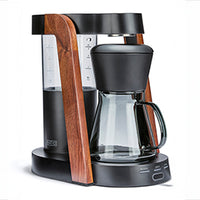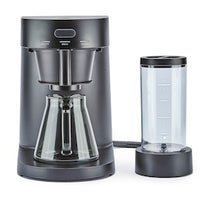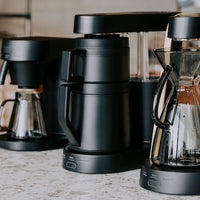You’ve Been Pouring Your Coffee All Wrong — Here’s the Fix
You’ve got the beans. The grinder. The gear. But your coffee still doesn’t taste like the clean, balanced brew you were expecting. The culprit might be something deceptively simple: how you pour.
In manual brewing, the pour is more than just moving water from the kettle to the coffee — it’s a technique that controls flow, saturation, and extraction. And if you’re doing it wrong (even slightly), your cup will show it.
Here’s what most people get wrong when pouring — and how to fix it.

The Mistake: Pouring Too Fast or Too Randomly
Most beginners pour like they’re filling a mug: fast, heavy, and without a pattern. But that can create uneven saturation, cause channeling in the coffee bed, and lead to over- or under-extraction.
Signs Your Pour Might Be the Problem
-
Water pools in some spots and misses others
-
The brew bed stirs up too much
-
Extraction time is wildly inconsistent
-
Your coffee tastes sour, hollow, or muddy
The Goal: Even Saturation and Controlled Flow
When water hits the grounds, it starts extracting flavors immediately. Your goal is to ensure that all grounds are evenly saturated for roughly the same amount of time. Uneven pouring leads to uneven extraction, which leads to inconsistent flavor.
A good pour introduces water slowly, evenly, and intentionally.
The Right Pouring Technique (Broken Down)
Here’s a simple framework to improve your pour:
-
Start with the Bloom
-
Add just enough water to saturate all grounds (about 2–3x the weight of the coffee)
-
Let it bloom for 30–45 seconds
-
Use a Spiral or Circular Motion
-
Begin pouring from the center and spiral outward
-
Avoid pouring directly on the filter walls
-
Maintain a gentle, steady stream
-
Control the Flow Rate
-
Don’t rush — the slower you pour, the more contact time
-
Avoid pausing for long periods mid-brew unless your method requires it
-
Keep the Kettle Close
-
Pour from a low height to avoid disturbing the bed
Use the Right Kettle
If you’re pouring from a traditional kettle, you’re working against yourself. A gooseneck kettle gives you far better control over direction and flow rate. It’s a must-have for pour-over enthusiasts and helps build consistency.

Don’t Neglect the Final Pour
A common mistake is getting lazy near the end — dumping in the last of the water without intention. But that final pour is just as important. Stay consistent with your motion and flow rate all the way through.
Finishing strong helps extract the full range of flavors without overdoing bitterness or leaving behind under-extracted notes.
Your Pouring Rhythm Matters
As you develop your pour, you’ll notice a rhythm — a meditative back-and-forth that keeps everything smooth. That rhythm translates into flavor. Consistency in your hand translates to consistency in the cup.
And once it clicks, it becomes part of the joy of brewing.
When the Pour Is Automated — And Still Precise
If pouring feels stressful or time-consuming, there are ways to simplify without sacrificing quality. Machines like those from Ratio Coffee are designed to help water distribution in a way that mimics expert manual pours.
That means you get even saturation and consistent timing — without needing to perfect your wrist technique.
Pour With Purpose
Fixing your pour doesn’t require barista-level skills. It just takes attention and intention. When you slow down, control your motion, and stay consistent, your coffee will reward you with better flavor, clarity, and balance.
The difference is noticeable — and once you feel it, you’ll never pour the same way again.
Frequently Asked Questions
Why does pouring technique matter?
Pouring affects how evenly the grounds are saturated, which directly impacts extraction and flavor.
What’s the best pouring pattern?
A slow spiral from the center outward helps ensure even coverage. Avoid pouring on the filter walls.
Can I pour too slowly?
Yes — if the water sits too long, it can over-extract. Aim for a steady, continuous flow.
Do I need a gooseneck kettle?
If you’re using pour-over methods regularly, a gooseneck kettle makes a huge difference in control and consistency.
 Ratio Eight S2
Ratio Eight S2
 Ratio Eight Original
Ratio Eight Original
 Ratio Six
Ratio Six
 Ratio Four
Ratio Four
 Compare Machines
Compare Machines






